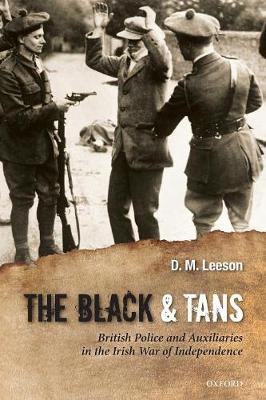
This is the story of the Black and Tans and Auxiliaries, the most notorious police forces in the history of the British Isles. During the Irish War of Independence (1920-1), the British government recruited thousands of ex-soldiers to serve as constables in the Royal Irish Constabulary, the Black and Tans, while also raising a paramilitary raiding force of ex-officers - the Auxiliary Division.
From the summer of 1920 to the summer of 1921, these forces became the focus of bitter controversy. As the struggle for Irish independence intensified, the police responded to ambushes and assassinations by the guerrillas with reprisals and extrajudicial killings. Prisoners and suspects were abused and shot, the homes and shops of their families and supporters were burned, and the British government was accused of imposing a reign of terror on Ireland.
Based on extensive archival research, this is the first serious study of the Black and Tans and Auxiliaries and the part they played in the Irish War of Independence. Dr Leeson examines the organization and recruitment of the British police, the social origins of police recruits, and the conditions in which they lived and worked, along with their conduct and misconduct once they joined the force, and their experiences and states of mind. For the first time, it tells the story of the Irish
conflict from the police perspective, while casting new light on the British government's responsibility for reprisals, the problems of using police to combat insurgents, and the causes of atrocities in revolutionary wars.
Interesting read, p48-49 features a raid on the co-op my grandfather helped found. This raid (and a reputed second raid) led to bankrupcy and debt for a lot of the locals, as the insurance company refused to pay out, "act of war" don't you know.
He examines some of the myths about the Black and Tans in Ireland and comes to the conclusion that the bad behaviour was down to what was permitted by senior staff and what people thought was fair. Most of the recruits were not bad people, they just had things happen to them that caused them to lash out.
I find the comment at the end that the whole thing was like a "large-scale version of the Stanford Prison Experiment, in Ireland" worth thinking about, because a lot of the occupancy of Ireland was something like that, very broken but the leaders didn't acknowledge this. It will be interesting to see how this is handled in the decade of commemoration.
Reading updates
-
Started reading
-
5 May, 2016:
Finished reading
-
5 May, 2016:
Reviewed
